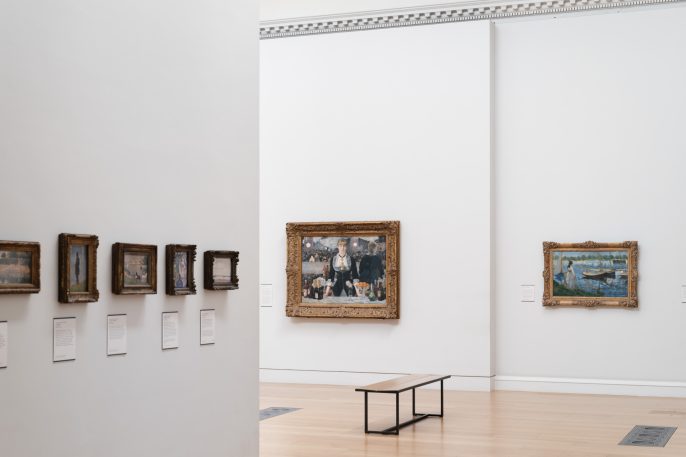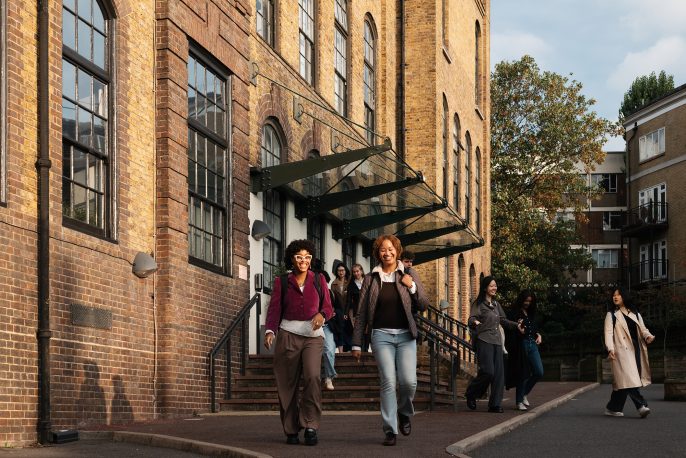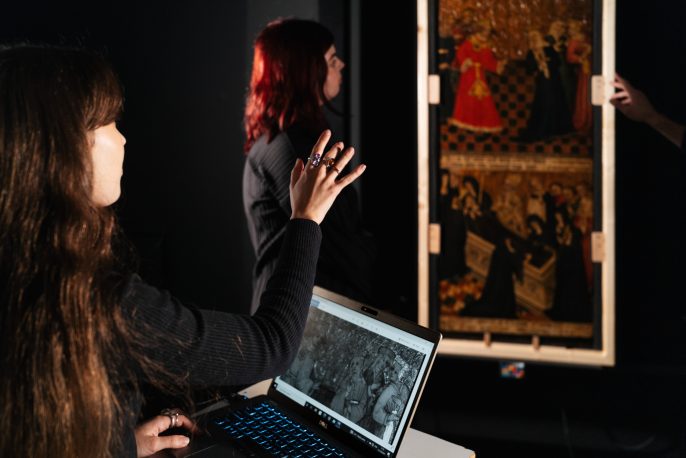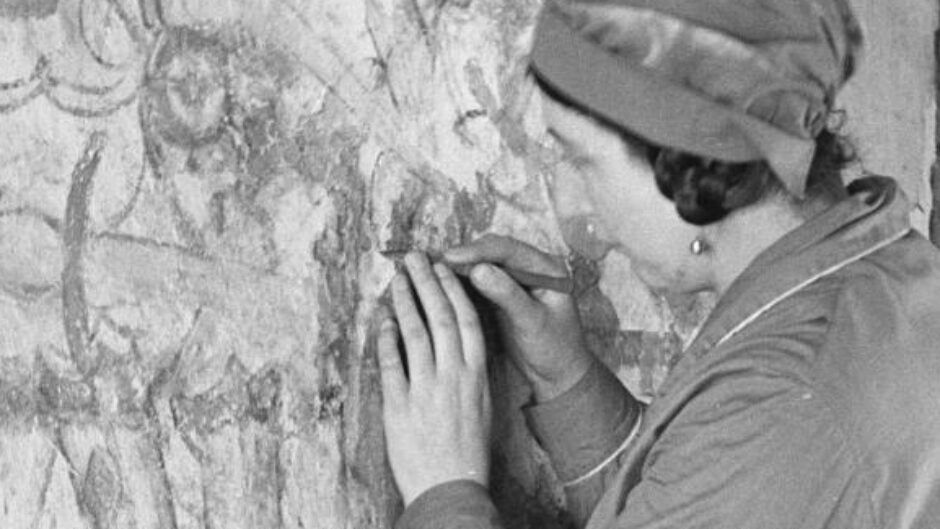
An overview
Historic England is the public body that helps people care for, enjoy and celebrate England’s spectacular historic environment. We deliver national expertise at a local level, through various departments:
- Listing
- Development advice through Inspectors of Historic Buildings and Areas, and Inspectors of Ancient Monuments
- Partnership Teams, including:
- Architectural Investigators
- Architects and Surveyors
- Historic Places Advisers
- Heritage at Risk Project Officers
Working across the country, and in tandem with the regional teams, the national specialist services include:
- Technical Conservation Team
- Fort Cumberland Laboratories
The Historic England Inspector would usually be the first point of call within Historic England, with regards to any proposals for works to (or around) wall paintings, especially within a Grade I or Grade II* listed building.
Inspectors may be contacted by the Local Authority Conservation Officer, owner or developer and, typically, this would be because expert specialist advice is required regarding the treatment of the wall paintings. Following initial consultation, the Inspector would seek advice from the Technical Conservation Team and Partnership Teams to advise on any condition surveys, proposed conservation approaches or methods and materials.
It would be for the Local Planning Authority to decide whether the proposed works require Listed Building Consent, and for Historic England to decide whether Scheduled Monument Consent is required. This would normally depend on the scale and impact of the proposed works and whether the methods are appropriate.
Archive collections
The Historic England Archive provides, online:
- over a million catalogue entries (including historical photos, drawings and reports) via our website
- over 600,000 photographs of English cities, towns and villages via our England’s Places resource
- historic aerial images via the Aerial Photo Explorer website
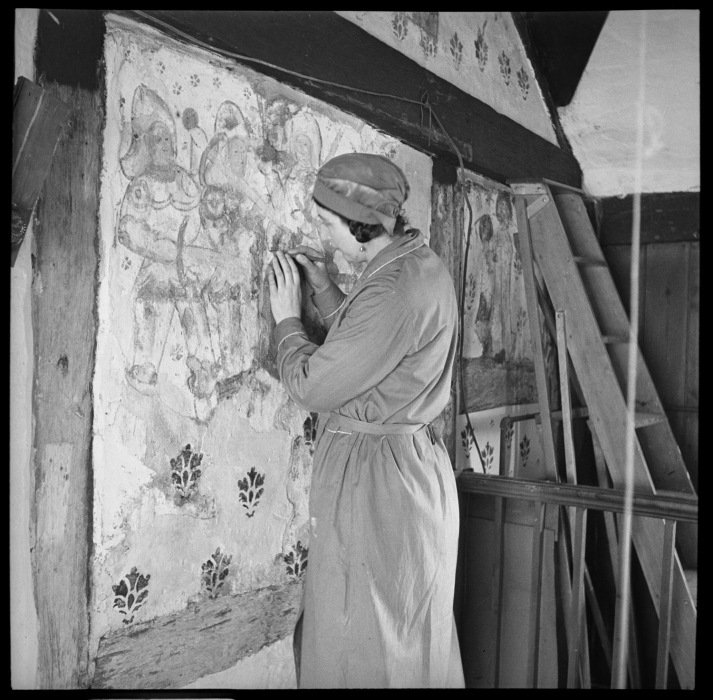
For more information or to order copies, please email archive@historicengland.org.uk. To arrange a visit of the Archive and Library to view material of interest, see the online booking system.
Registered files may hold information pertaining to the history of the site, the physical history of the building fabric and wall paintings, site conservation management plans, environmental and condition assessments, conservation reports, materials analysis reports etc. Extant information varies across the archive files. Requests for copies of information contained within registered files can be sent to the Access to Information Team via the email address foi@historicengland.org.uk. Information held in our registered files and electronic systems will have to be assessed for release on a case-by-case basis. Requests for this type of information will be processed under the Freedom of Information Act or the Environmental Information Regulations.
Where to find information
Looking in more detail at the types of information available online through Historic England departments and teams frequently involved with wall paintings:
Listing
The National Heritage List for England (NHLE) is the only official, up-to-date register of all nationally protected historic buildings and sites in England. The database may be consulted through Search the List. To apply for a building to be listed, or to upgrade a List entry see Listing Selection Guides on the Historic England website. These show the criteria for listing, which is helpful to build a case/portfolio with all the required information.
Requests to amend existing list entries may be sent through an online application form (Listing and Designation Application Form | Historic England). The process of amending or upgrading a List entry can take time, so it is recommended to contribute concurrently to the Missing Pieces Project, which allows immediate uploading of photographs and documents that may highlight the presence of a feature not mentioned in the list entry.
The Listing helpdesk may be contacted through listing.enquiries@HistoricEngland.org.uk.
Technical Conservation Team
The Technical Conservation Guidance and Research brochure lists our technical conservation guidance, research reports and ‘Technical Tuesday’ webinars on all aspects of the care, repair, maintenance and adaptation of the historic built environment. All our guidance, advice and reports are free to download – see the Technical Guidance pages for further information.
Under Looking After Historic Buildings, the Looking After Wall Paintings pages include advice notes [previously known as the ‘Practical Information Leaflet’ series] on Wall Paintings: Anticipating and Responding to their Discovery, conservation reports and, forthcoming this year, ‘Understanding the Environmental Performance of Historic Buildings for Conservation’. Information is also provided on the Temporary Protection of Historic Features During Building Works.
Technical advice on how to survey historic places is available on the Surveying and Recording Heritage pages. Our Geospatial Survey Team provides free external advice, and training on an ad hoc basis. For more information about our technical advice and research, or any specific query for our teams in Technical Conservation, please contact NationalSpecialistServices@HistoricEngland.org.uk.
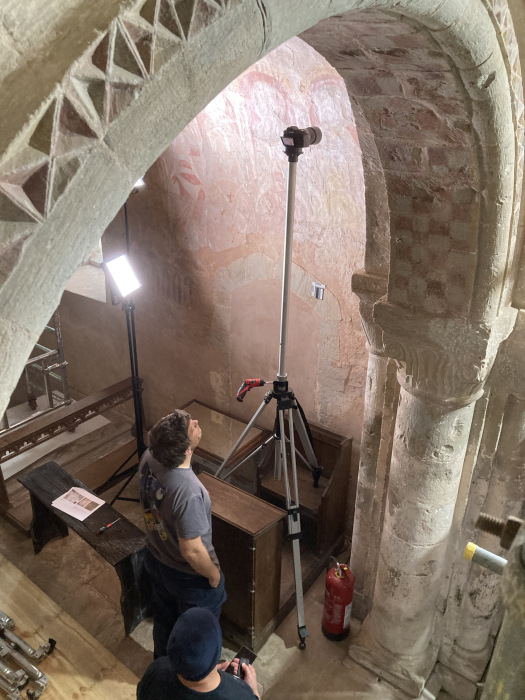
Fort Cumberland Materials Science Laboratories
Our laboratories at Fort Cumberland just outside Portsmouth have a wide range of scientific equipment which can be used for research, including:
- 3D microscope (Keyence VHX7000 3D digital microscope)
- X-ray radiography
- Scanning-electron microscope with energy-dispersive spectrometer (SEM-EDS) (Jeol JSM-IT710HR, with an Oxford Instruments Ultimax 65mm2 detector, with Advanced Aztec software)
- Bench-top micro X-ray Fluorescence spectrometer (μXRF) (Bruker M4 Tornado)
- Handheld portable X-ray Fluorescence spectrometers (pXRF) (Niton XL3t XRF, Thermo Fisher Scientific and Bruker S1 Titan 800)
- X-ray diffractometer (XRD) (Bruker D8 Advance)
- Fourier-transform infrared (FTIR) spectroscopy (Spectrum 100 spectrometer, Perkin Elmer)
Our reference collections include several thousand samples from the archaeological sites, wrecks, collections and historic buildings featured in our reports and publications (see the virtual tour of our laboratories for further information).
The Historic England heritage science facilities can be accessed via the RICHeS programme. We are partners with the English Heritage Trust on the project Creating a national integrated mobile and fixed lab for collections, historic buildings and sites, which:
• aims to enhance the research infrastructure to address the impacts of climate change on heritage preservation and sustainability
• will provide access to state-of-the-art equipment, enabling in-depth analysis of material degradation, building performance and environmental conditions.
Historic England is also a National Node Access Provider as part of E-RIHS (European research infrastructure for heritage science), providing access to heritage science facilities and collections. For more information, please contact (referencing Fort Cumberland Laboratories) NationalSpecialistServices@HistoricEngland.org.uk
Specialist skills – locally based
Architectural Investigators undertake research and recording on historic buildings and often produce historic buildings assessment reports. They work on requests from Listing, Development Advice, Heritage at Risk or as part of Heritage Action Zones, mostly in response to new discoveries. Many reports are available online (searchable by name and location), others are available from the Historic England Archive. Reports seek to look at a building as a whole, so that the context is understood. Sites are also sometimes recorded by Historic England’s professional photographers. Where wall paintings are present, the Architectural Investigator will typically involve a wall painting conservator (see for example, Church House Farm, Wellington, Herefordshire).
Architects & Surveyors work within a multi-disciplinary team to provide grants and specialist advice. When Historic England proposes grant aid, or suggests a National Lottery Heritage Fund grant, the Architect/Surveyor recommends an initial investigation by a multi-disciplinary team (architect, archaeologist, structural engineer etc), including an accredited wall painting conservator. The Architects & Surveyors hold regular cross-regions informal peer review meetings, making sure that all required specialisms are involved in casework.
Any general questions may be sent to our Customers Services customers@HistoricEngland.org.uk who will forward them to the relevant departments.



